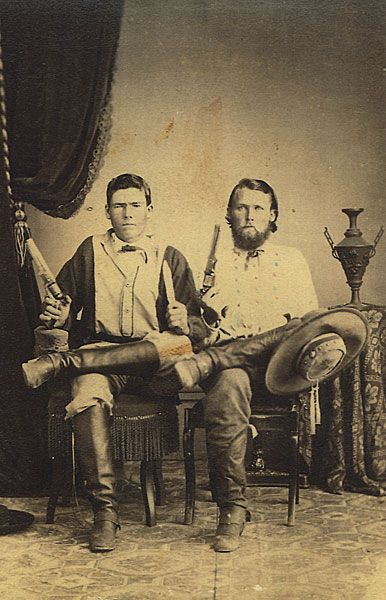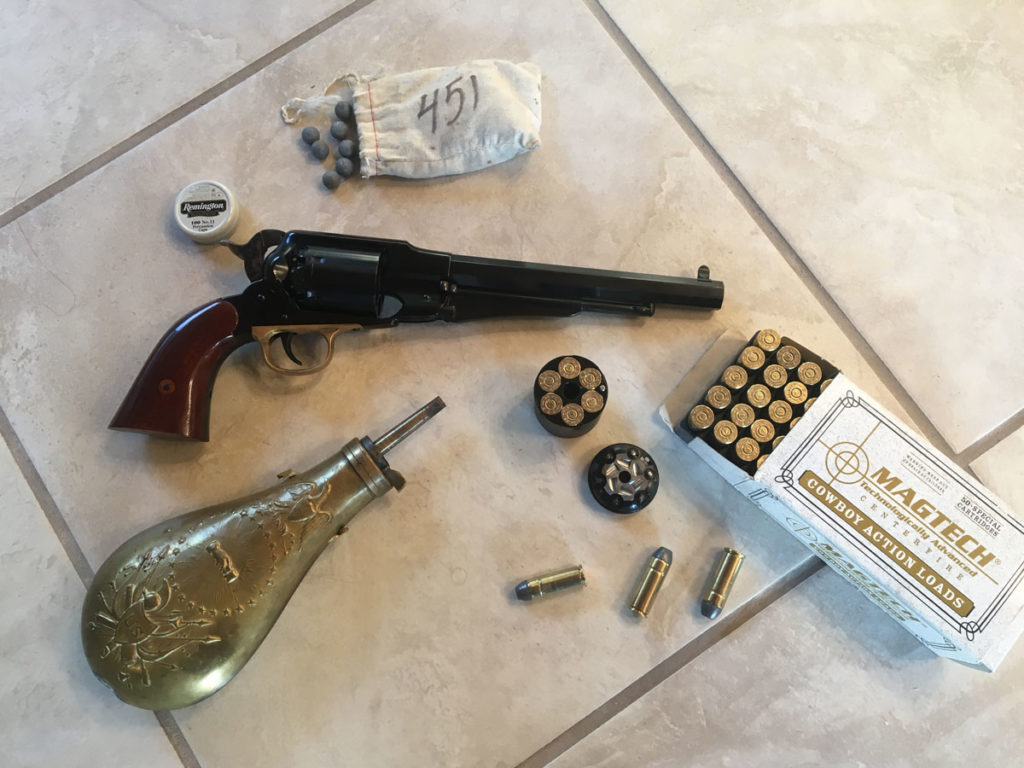 The cap and ball revolver, also known as the percussion revolver, is a sophisticated weapon of war. Even though those wars were in the 1800’s, the cap and ball remains an interesting and effective handgun. Taylor’s & Company is keeping these legends alive by producing classic firearms made famous by soldiers, cowboys, lawmen, and outlaws.
The cap and ball revolver, also known as the percussion revolver, is a sophisticated weapon of war. Even though those wars were in the 1800’s, the cap and ball remains an interesting and effective handgun. Taylor’s & Company is keeping these legends alive by producing classic firearms made famous by soldiers, cowboys, lawmen, and outlaws.
Until Samuel Colt, most pistols were single-shot muzzle-loaders fired by wheel lock, flintlock and percussion ignition systems. In 1835, Colt patented the first successful percussion revolver. After numerous designs, he came up with the 1836 Patterson revolver. Upgrades, modifications, better metallurgy and competitors soon followed.
Colt’s best customer was the Republic of Texas. The Texas army and navy placed orders Patterson revolvers. When the two military branches were disbanded, many of the five-shooters were given to the Rangers. The standard frontier gun at the time was the single shot flintlock muzzleloading Plains Rifle, a compact version of the Pennsylvania-Kentucky. Dependable and powerful, it was accurate to about two hundred yards. It took a full minute to load in a fight.
The Indians built their tactics around this weakness. They would send a few scouts to draw fire; then the entire war party would rush the Rangers during the reload. The Rangers carried pistols (often two or three) but single-shot flintlocks were inaccurate and unreliable. Indian bows and lances proved quick and deadly in close fights.
On June 8, 1844, Captain Jack Hays and fourteen Texas Rangers were on patrol looking for a Comanche war party who had conducted a series of raids near San Antonio. This patrol was different because Hays and his men were armed with recently obtained Patterson revolvers.
The Rangers encountered a Comanche war party of sixty warriors. The Comanches probed and taunted, advanced and withdrew. Then they attacked in mass. The Rangers stood back to back shooting and changing cylinders in their revolvers. When the fight at Walker’s Creek was over, the Rangers had lost one man (dead) and had four wounded.
The Comanches abandoned the field with their wounded leaving 23 dead warriors. This skirmish changed the fight in Texas and across the west. The repeating firearm made human wave attacks suicide.
The heart of the Colt design is a fixed barrel with a rotating cylinder drilled with five or six chambers (also known as charge holes). Cap and ball pistols require loading loose powder and ball into each chamber. You dump in a measured powder charge, cover it with a ball and use the attached lever under the barrel of the gun to swage the ball into the cylinder.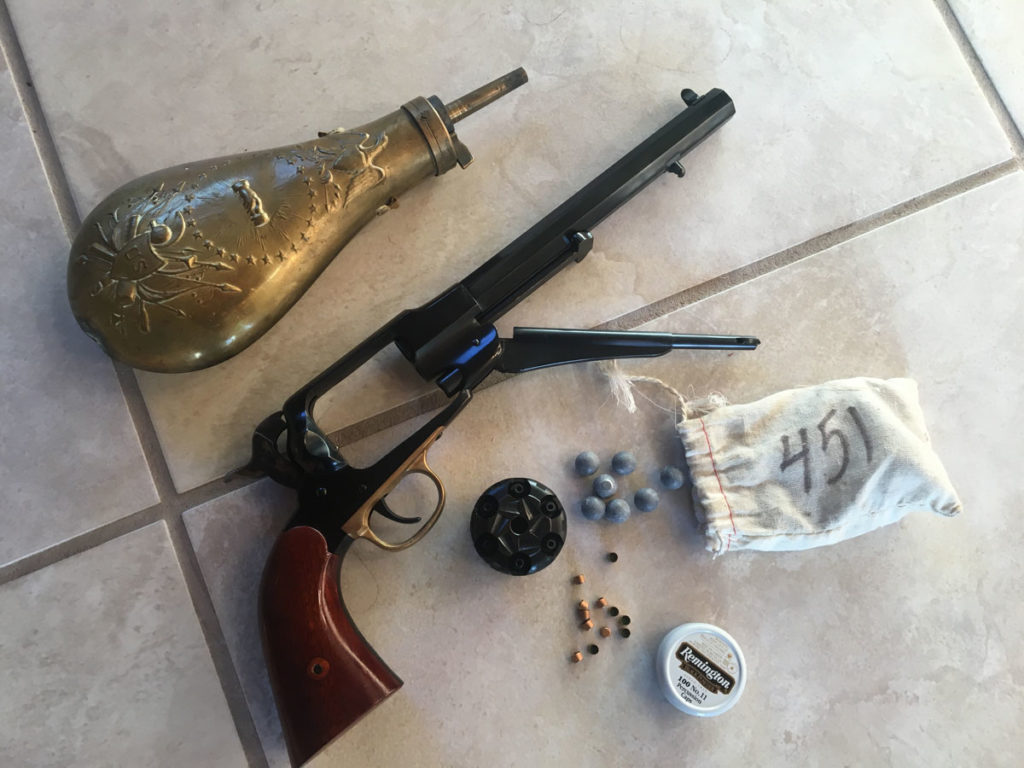
The rear of each chamber has a nipple which holds a percussion cap. When the hammer strikes the cap, a priming compound is ignited sending a jet of flame to the powder charge and propelling the ball down the barrel. Although slow to reload, usually requiring three minutes, this method is simple and dependable.
You get six quick shots. You can reload, but it is going to take you some time unless you have another loaded cylinder. Sometimes caps will fail to fire or pieces of the cap from a previous shot can fall into the frame, binding the cylinder up so you can’t fire. Still, it was much better than a flintlock. Many fighters carried more than one handgun to make up in mass what they lacked in reload speed and reliability.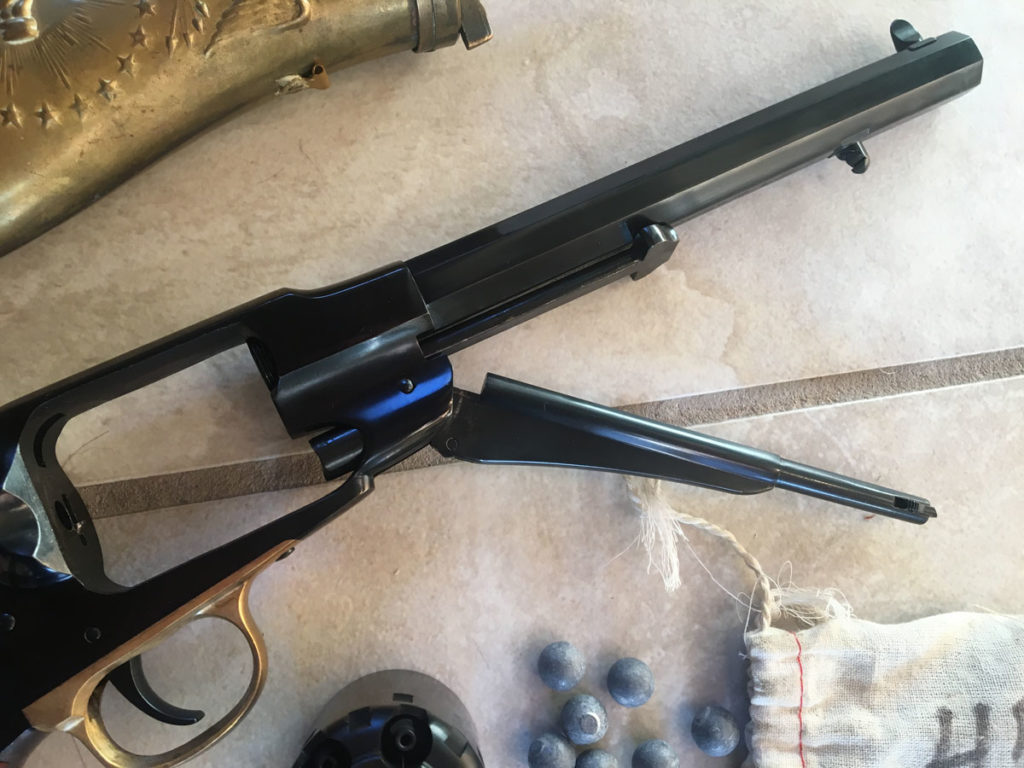
These early revolvers were single action. The hammer had to be cocked before each round. Colt devised a mechanical linkage which rotated the cylinder as the hammer was cocked. The only function performed by the trigger was to release the hammer. There was no safety, one chamber was normally left unloaded and the hammer lowered onto that chamber.
Loading under adverse conditions like wind and rain is problematic. During the Civil War, the US Army used paper cartridges, made in private and government-owned arsenals which made loading faster. They were simply inserted in the cylinder and then capped.
Colt’s 1836 patent expired in 1857 and Remington was waiting in the wings. Remington produced their Model 1858, a powerful and rugged revolver. Remarkably ahead of its time, the 1858 looks very much like a modern revolver. It became famous in the Civil War as the Remington New Model Army, a solid-frame design both elegant and reliable. The 1858 Remington was the first choice of officers following the Civil War.
Loaded with six 44 caliber bullets pushed by 30-35 grains of black powder, the New Model Army’s solid frame made it mechanically stronger than the Colts with modest recoil for its caliber. The groove and post sight system is better than the tiny Colt sights with a front bead sight and a notch in the hammer. Easily removable, replaceable cylinders made reloading extremely fast.
I became infatuated with the New Model Army. The highly realistic Taylor’s & Company Model 1858 New Army .44-Caliber Black Powder Revolver was just what the doctor ordered. The beautiful blued steel frame is set off by a polished brass trigger guard. The octagonal barrel and walnut grips complete the authentic look.
Another cool thing about these guns is that you can buy them just like they did in 1858, no paperwork required. Just head down to the general store or Cabella’s and pick one up. You don’t have to fill out a form 4473 and there is no NICS check. State laws can be a different story. Some states exempt them entirely from firearms law like the federal government. Other states define them as guns.
There is an exception in federal firearms law for guns that were manufactured prior to 1898. It includes all replicas of those guns that do not use fixed ammunition such as cap & ball revolvers. The weapons of the Civil War and gunfighters like Wyatt Earp are not firearms according to ATFE. You can order them in the mail and get them delivered right to your door like pizza.
The 1858 New Army .44-Caliber Black Powder Revolver delivers that same power with its blued steel construction, polished brass trigger guard, octagonal barrel and walnut grips.
Specifications:
Manufacturer: Uberti
Manufacturer’s Suggested Retail Price: $347.00
Barrel Length: 8 Inch
Caliber: .44
Capacity: 6 rounds
Weight: 2.7 lbs
Sights: Dovetail Front Blade
Overall Length: 13.6 Inches
Blue with steel frame and backstrap and brass trigger guard.
Six-shot. R&D Conversion Cylinder sold separately.
I didn’t get this thing to look at, the .44 is the most popular modern caliber for cap and ball. The .44 was adopted in the huge Army holster pistols of the Mexican War. The Navy went with the more elegant .36 caliber, but the Army didn’t just shoot people, they had to stop horses too.
These bullets can be pushed past 1,000 feet per second. Like most cap and ball revolvers, the .44 caliber is plenty accurate. Pistols like the big Colt Walker and Dragoon series of pistols are available, but the later service guns, particularly the more sophisticated Remington New Model Army caught my eye.
After the Civil War, Colt and Smith and Wesson introduced cartridge firing revolvers. Even though outdated, the old cap and ball revolvers remained popular with former soldiers. Bill Cody kept his Remington cap and ball revolver well into the 1900’s; he said that it never failed him.
Many of these old veterans were converted to fire metallic cartridges, but in the 1870s and 1880s, as more convenient cartridge revolvers were introduced, they lost popularity. Many percussion pistols were converted to fire cartridges using conversion cylinders and these are still available today.
You can switch back and forth from black powder to centerfire by simply changing the cylinder. The conversion cylinder holds the cartridges in six chambers covered by a plate. The parts fit together without screws or threads, so reloading is simple: pull the cylinder pin, drop the cylinder and lift off the plate.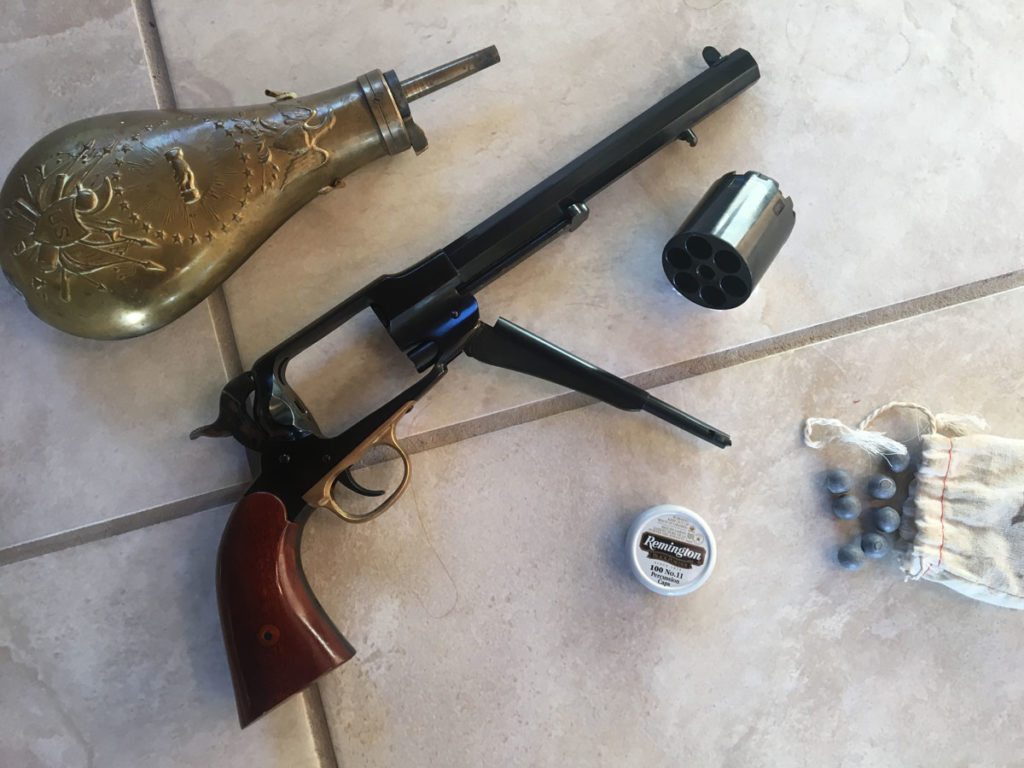
Taylor’s and Company makes cartridge cylinders that fit the 1858 Remington and many other cap & ball pistols. Certified 4150 arsenal-grade steel is used in the production of these cylinders and top-plates. These units are safe and durable but you should only use lead cowboy ammunition that doesn’t exceed 850 FPS. No frame modification is needed, although minor fitting may be required due to gun manufacturer variations.
Cylinders ship separate from a pistol purchase. If you put one of these cylinders into a cap and ball pistol, you are, according to federal law, manufacturing a firearm. State laws may vary and the gun may have to be registered. If you can’t own a handgun legally you cannot manufacture one legally.
The Taylor’s and Company Conversion Cylinder for Pietta 1858 Remington Steel Frame, .44 Caliber in a Blued finish list for $240.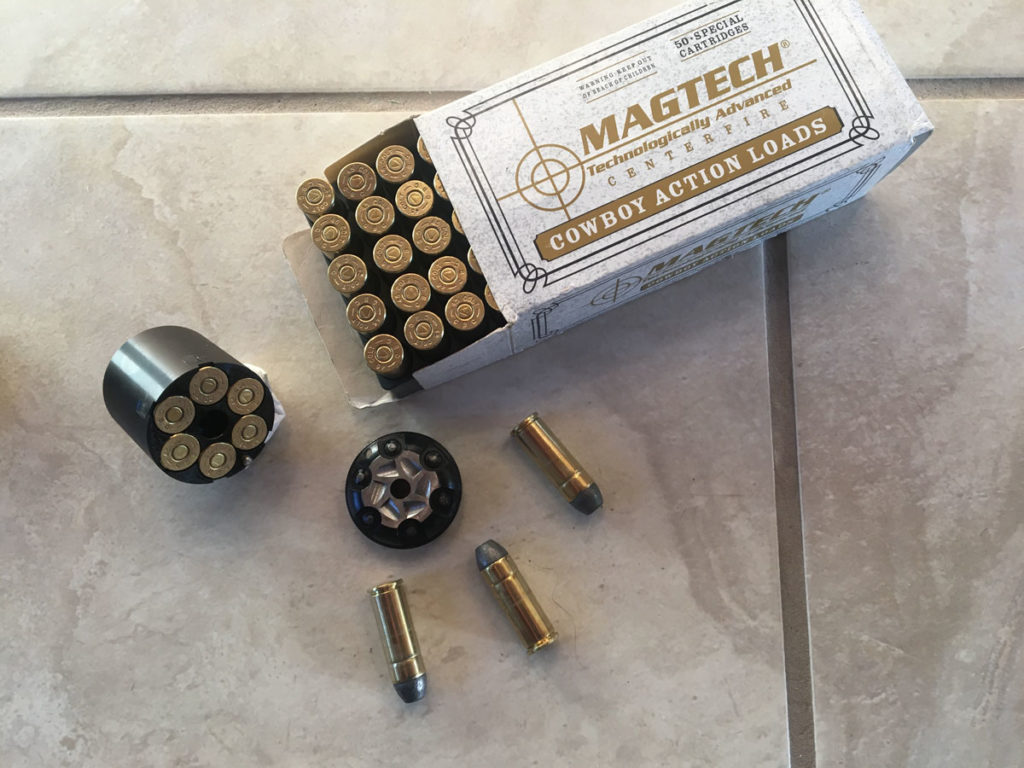
While cap and ball pistols may seem primitive, at close range they are just as deadly as a phaser. They are effective and powerful weapons of war, ask the Comanche. While actual pistols from this era exist, they are far too valuable to shoot and there are safety concerns.
Modern replicas are affordable high-quality replicas of those classic guns. Taylor’s & Company carry the largest selection of black powder revolvers on the market. They cover every significant firearm model from the 1847 Walker to the 1873 Peacemaker.
Taylor’s & Company’s faithful reproductions of 19th century Civil War and Old West guns are made using precision machinery and high-quality materials. If you want to test your mettle against the Union Army or the old west gunfighters, Taylor’s and Company is your huckleberry.
Visit Taylor’s & Company by clicking here.
***Shop GunsAmerica for your next Taylor’s & Co pistol***
